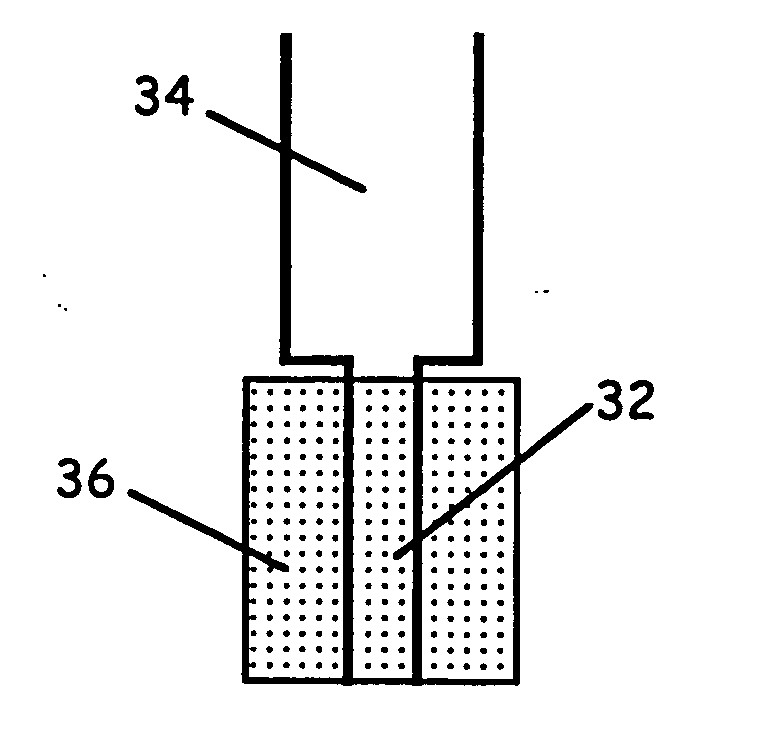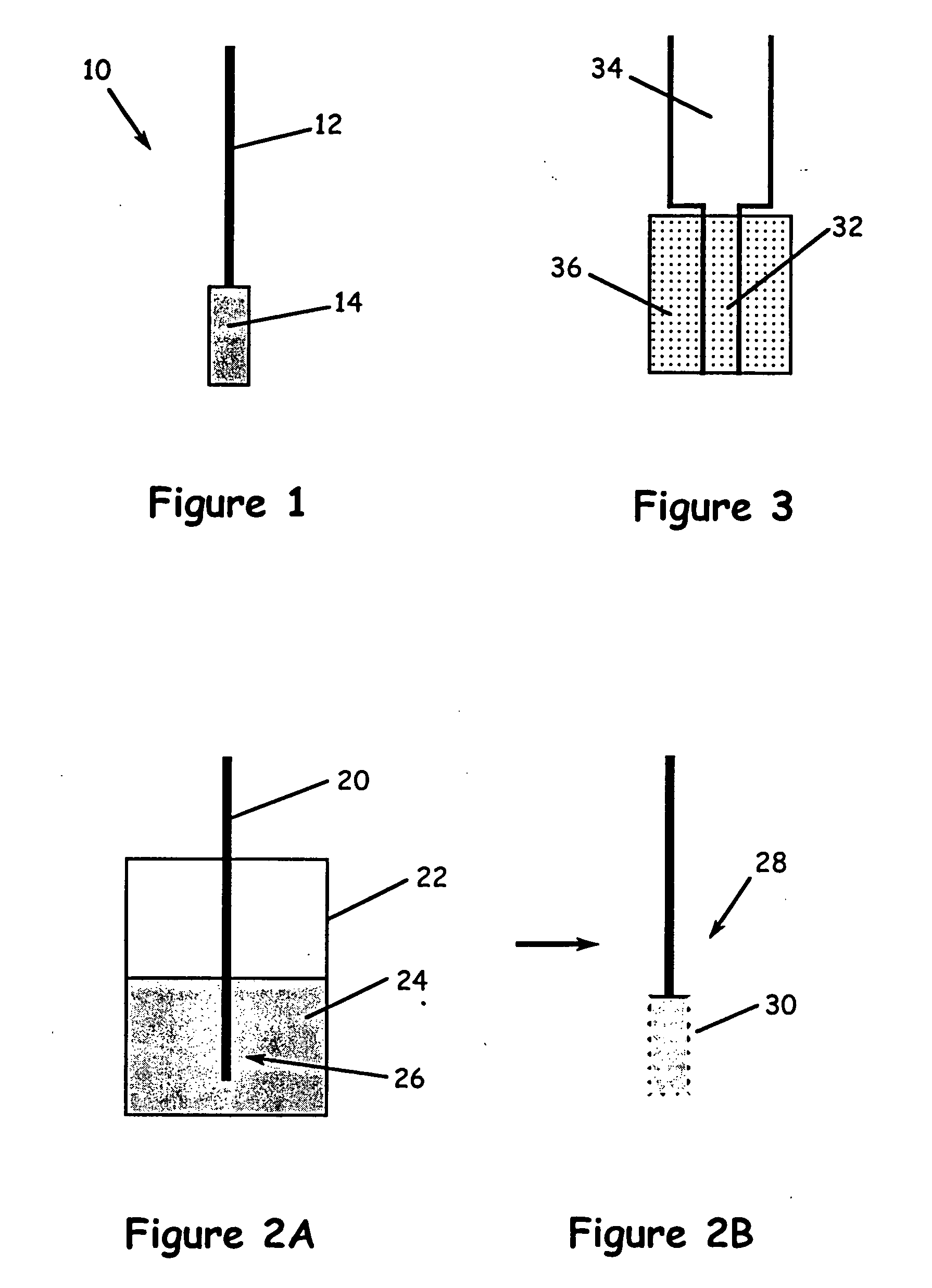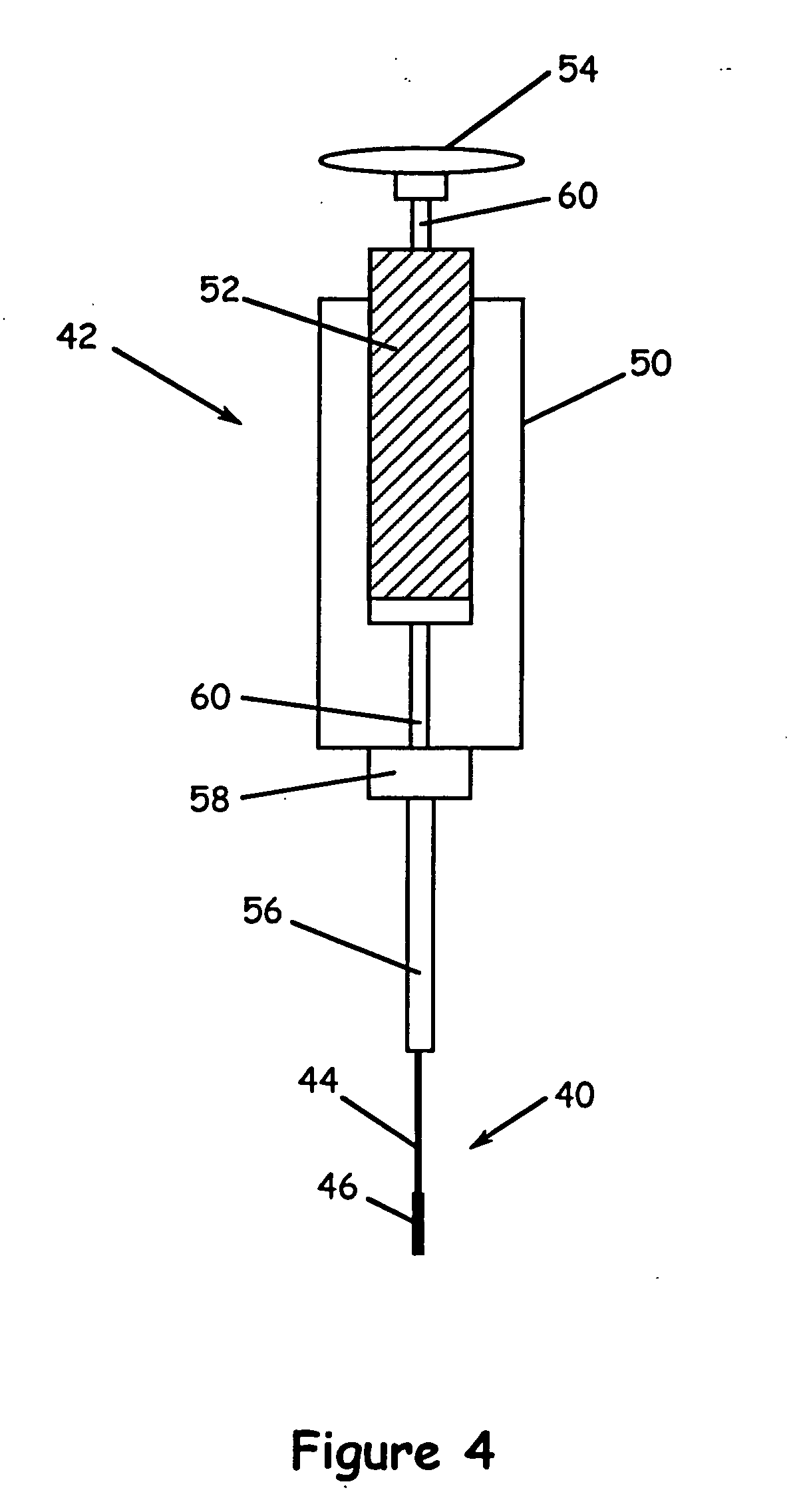Method for preparing a solid phase microextraction device using aerogel
a microextraction device and aerogel technology, applied in the direction of biochemical material analysis, inorganic chemistry, component separation, etc., can solve the problems of weak gel solid structure, significant shrinkage of solid network, and gels that are typically not strong enough to resist shrinkage, etc., to achieve easy and rapid manufacture of sample fluids, easy to tolerate thermal cycling conditions, and convenient to manufacture
- Summary
- Abstract
- Description
- Claims
- Application Information
AI Technical Summary
Benefits of technology
Problems solved by technology
Method used
Image
Examples
Embodiment Construction
[0021] The present invention is a solid phase microextraction (SPME) device or assembly using a support structure coated with a substrate formed of aerogel, xerogel, or combinations thereof. The xerogels and aerogels may be organic (i.e., carbon-based) or made from a variety of metal oxides (e.g., silica, tantala, zirconia). The gel solution can be doped with various metals or other compounds, thereby incorporating them into the solid network or lattice of the substrate material. The support structure may be formed of glass fiber, a high temperature plastic, or a metal wire such as stainless steel or kovar. Kovar wire is index-matched to the thermal expansion of glass, which is advantageous when using silica-based xerogel and aerogel coating materials. Stainless steel also has a thermal expansion similar to glass and is more robust than kovar.
[0022] This invention allows many different types of SPME collection fibers to be designed that are tailored to specific collection schemes a...
PUM
| Property | Measurement | Unit |
|---|---|---|
| thermal expansion | aaaaa | aaaaa |
| temperature | aaaaa | aaaaa |
| organo-metallic | aaaaa | aaaaa |
Abstract
Description
Claims
Application Information
 Login to View More
Login to View More - R&D
- Intellectual Property
- Life Sciences
- Materials
- Tech Scout
- Unparalleled Data Quality
- Higher Quality Content
- 60% Fewer Hallucinations
Browse by: Latest US Patents, China's latest patents, Technical Efficacy Thesaurus, Application Domain, Technology Topic, Popular Technical Reports.
© 2025 PatSnap. All rights reserved.Legal|Privacy policy|Modern Slavery Act Transparency Statement|Sitemap|About US| Contact US: help@patsnap.com



